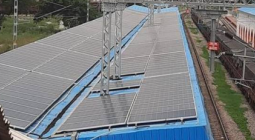Solar panel and battery storage company Sunrun’s battery fleet supplied an average 360 megawatts during the event, or about two-thirds of the total output. Tesla provided the next-largest share of the total 535 MW, according to [pdf] independent analysis by Brattle Group, a Boston-based consulting firm.
The event was “the largest test of its kind ever done in California—and maybe the world,” says PG&E.
“Four years ago this capacity didn’t even exist,” Kendrick Li, PG&E’s director of clean energy programs, told Semafor. “Now it’s a really attractive option for us. It would be silly not to harness what our customers have installed.”
Brattle said the test achieved “a visible reduction” in load and suggested that using VPPs on peak days “could reduce the need to invest in new generation capacity and/or relieve strain on the system associated with the evening load ramp.”
California has proactive incentives for VPP technology adoption through its Demand Side Grid Support Program, which pays electricity customers who either reduce their energy use or supply power to the larger grid during high demand, Canary Media reported in early June. However, the program’s future is now uncertain after the state legislature cut US$18 million of its funding in a new budget.
VPPs are being pursued in other jurisdictions, too. In British Columbia, BC Hydro began a new Peak Saver program to transform 200 homes in two communities—Sun Peaks and Harrison Mills—into VPPs. The program will network small-scale energy sources like home batteries, smart thermostats, and EVs to help balance demands on the electricity grid. And Ontario launched Canada’s largest VPP in 2024 after enrolling 100,000 consumers in its Save on Energy Peak Perks program.
Interest in battery storage continues to grow across North America, including among utilities seeking to install larger battery energy storage projects within their network. A study for the American Clean Power Association found [pdf] that adding about 11 gigawatts of batteries in the Midcontinent Independent System Operator region could save roughly US$27 billion in system costs by 2035.





